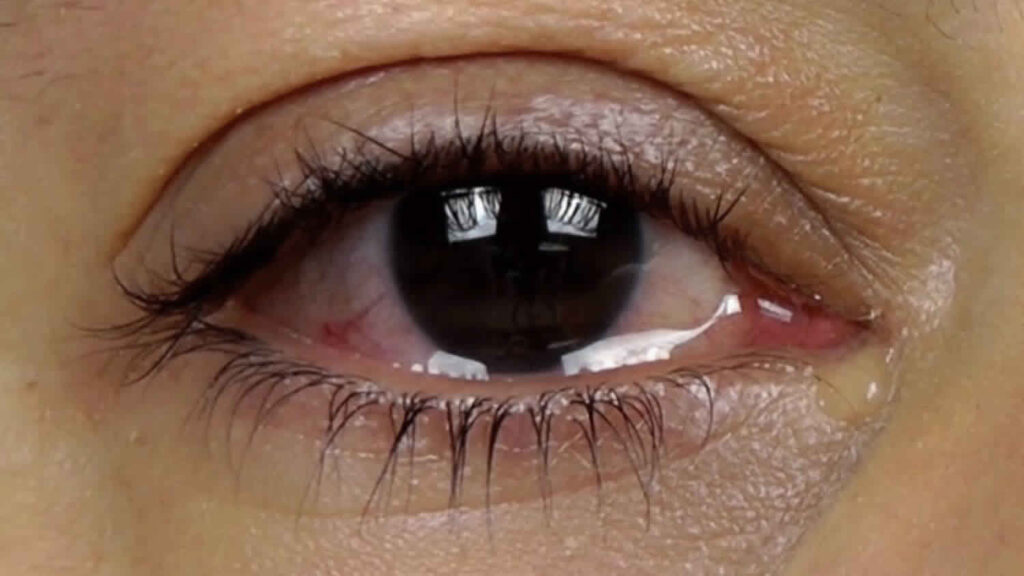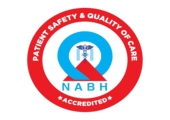Watery eyes, also known as epiphora or tearing, are a condition with an overflow of tears onto the face. Tearing is one of the most frequently experienced symptoms, which makes us visit an eye doctor.
The tear produced from the glands, the conjunctiva’s secretion and the oil produced by the oil glands in the lids form the Tear film Complex.
Tears serve several vital roles in your body. They keep your eyes lubricated, help to wash away foreign particles and dust and provide crystal-clear vision. They are also a component of your immune system that protects the eyes against infection. However, uncontrolled tearing or watery eyes can impact your well-being and daily life.
Tears normally drain through tiny openings (puncta) in the inner part of the lids near the nose into the tear tubes, which join together to form the tear duct located in the nasal bones (nasolacrimal duct) and drain into the nose and finally into the throat. That is why we experience the bitterness of eye drops when used.
Watch more videos like this on Shekar Eye Hospital YouTube Channel
Causes of Watery Eyes
- Foreign objects and injury
- Hay fever or allergic rhinitis
- Pink eye (conjunctivitis)
- Blocked tear duct
- Common cold
- Aging
- Ectropion (outwardly turned eyelid)
- Entropion (inwardly turned eyelid)
- Keratitis (inflammation of the cornea)
- Blepharitis(inflammation of the eyelids)
- Ingrown eyelash (trichiasis)
- Trachoma(bacterial infection of the eye)
- Dry eyes (decreased production of tears)
- Corneal abrasion (scratch)
- Medications like Chemotherapy drugs, Epinephrine, certain eye drops etc
Treatments of Watery Eyes
Treatments of watery eyes depend on the cause, how severe the problem is, and whether or not other symptoms are present. In mild cases, doctors may recommend watching and closely monitoring the patient’s progress. Additional treatment may be necessary if the issue doesn’t clear up on its own or if symptoms worsen.

Different treatment options for watery eyes depending on the various causes include:
Irritation
Watering or tearing eyes due to viral conjunctivitis usually improves on its own, whereas some doctors treat bacterial conjunctivitis with antibiotic drops. Using a warm compress to soothe swelling, and rinsing the eye with sterile water helps to remove any crusting or discharge.
Trichiasis
It is a common eyelid problem in which eyelashes grow inwards toward the eye. The lashes rub against the cornea, the conjunctiva, and the inner surface of the eyelids and irritate the eye.
Ectropion
Ectropion is an uncomfortable condition of the eye where the lower eyelid droops away from the eye and turns outwards. These can be corrected by tightening the loose tissues, in the eyelids, followed by stitches. These are all done under local anesthesia as the daycare procedure.
Narrow Puncta
The tear tube openings called puncta can sometimes be narrow or small. This results in a delay in the drainage of the tears through the tubes. We can open them up in these conditions and widen them through stents.
Blocked tear ducts
Surgery can be the only option when the tear duct is blocked. There are no medications or treatments for this condition. Because of the blocked duct, tears start collecting in the tear sac, which in future can result in infections. Sometimes very rarely, severe infections can result in loss of vision.
Surgery can create a new channel from the tear sac to the inside of the nose allowing the tears to bypass the blocked part of the tear duct. This surgical procedure is called dacryocystorhinostomy. This is done as a daycare procedure under local anesthesia, mild sedation or general anesthesia, depending on the pain tolerance and comfort.
Once the surgery is done, sometimes a stent is placed in the tube. The external wound is closed through a few stitches, which can be removed after a week. The stent, if placed, can be removed within six weeks to three months duration of time.
Watering in Newborns
Watering can also be seen in newborn babies. About 20% of the babies are born with an incomplete nasolacrimal duct. Often, this opens up on its own by the age of one. These kids are advised a nasolacrimal massage called Criglers massage which the parent does.
Crigler massage is a technique whereby the parent uses his/her finger and presses on the bone, at the junction between the eye and the nose, decompressing the top of the nasolacrimal sac, and then moves the finger downwards. This is usually recommended for the infant until one year of age. This method prevents the pooling of the tears in the tear sac and pushes the fluid through the tear duct, which might have been blocked at the nasal end.
This is usually done and observed under nine months of age. If the watering persists along with discharge, then the doctor recommends a procedure called Probing. During probing, a small probe is passed through the tear tube into the nasolacrimal duct to open the blockage. It is a daycare procedure done under general anesthesia and the baby will be monitored subsequently.
Watery eyes are common at any age. However, this condition is not always a cause for concern but sometimes can also be a symptom of a severe infection. Therefore, it is highly recommended to consult an eye doctor if you have epiphora along with pain, changes in vision, or a gritty sensation in your eyes. We hope this was helpful. Thanks for reading.






